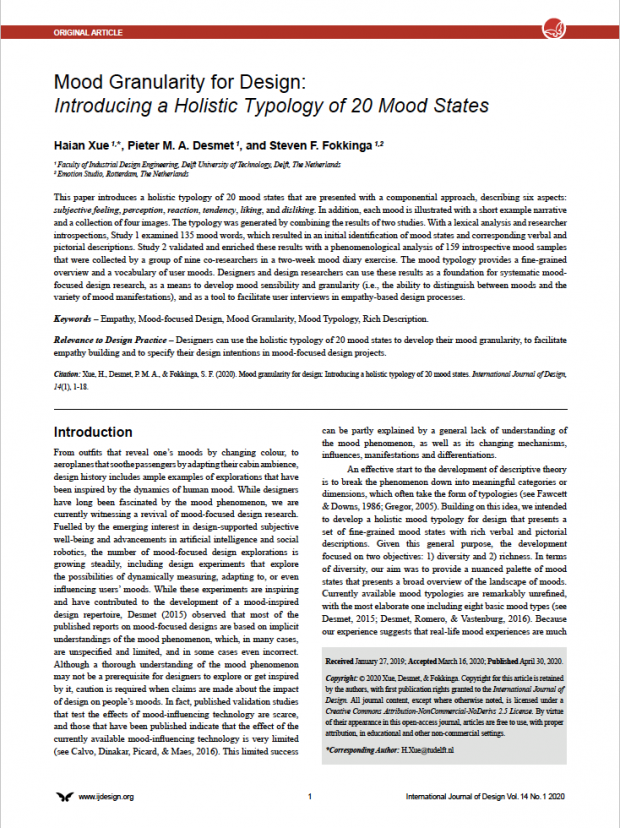Abstract
This paper introduces a holistic typology of 20 mood states that are presented with a componential approach, describing six aspects: subjective feeling, perception, reaction, tendency, liking and disliking. In addition, each mood is illustrated with a short example narrative and a collection of four images. The typology was generated by combining the results of two studies. With a lexical analysis and researcher introspections, Study 1 examined 135 mood words, which resulted in an initial identification of mood states and corresponding verbal and pictorial descriptions. Study 2 validated and enriched these results with a phenomenological analysis of 159 introspective mood samples that were collected by a group of nine co-researchers in a two-week mood diary exercise. The mood typology provides a fine-grained overview and a vocabulary of user moods. Designers and design researchers can use it as a foundation for systematic mood-focused design research, as a means to develop mood sensibility and granularity (i.e., the ability to distinguish between moods and the variety of mood manifestations), and as a tool to facilitate user interviews in empathy-based design processes.

Citation: Xue, H., Desmet, P. M. A., & Fokkinga, S. F. (2020). Mood granularity for design: Introducing a holistic typology of 20 mood states. International Journal of Design, 14(1), 1-18.



